|
|
Post by bixaorellana on Sept 11, 2012 5:18:31 GMT
Oaxaca is a mountainous state, with several indigenous groups that preserve their language and customs. Among those, there are quite a few where women continue to use traditional dress. The end of July sees a glorious pageantry of these various forms of dress as Oaxaca celebrates the Guelaguetza. As part of the festivities this year, there was a lovely exhibit in the historic Governor's Palace (now a museum) showcasing some exceptional examples of traditional dress and teamed with a market of traditional textile crafts. |
|
|
|
Post by bixaorellana on Sept 11, 2012 5:53:13 GMT
I probably should include a little vocabulary:
traje= suit or outfit; novia= bride; bordado= embroidered; teñido= dyed; telar= weaving; cintura= waist (telar de cintura= waist loom);
hilo= thread; algodón= cotton; lienzo= panel; huipil= the traditional straight-sided dress.
This is from one of the Triqui communities. It's quite common to see these brightly clad women in the city of Oaxaca, where many of them are clothing vendors.    Sorry, no provenance on this, a beautiful hand loomed piece: Sorry, no provenance on this, a beautiful hand loomed piece: From Jamíltepec, on the coast: From Jamíltepec, on the coast:       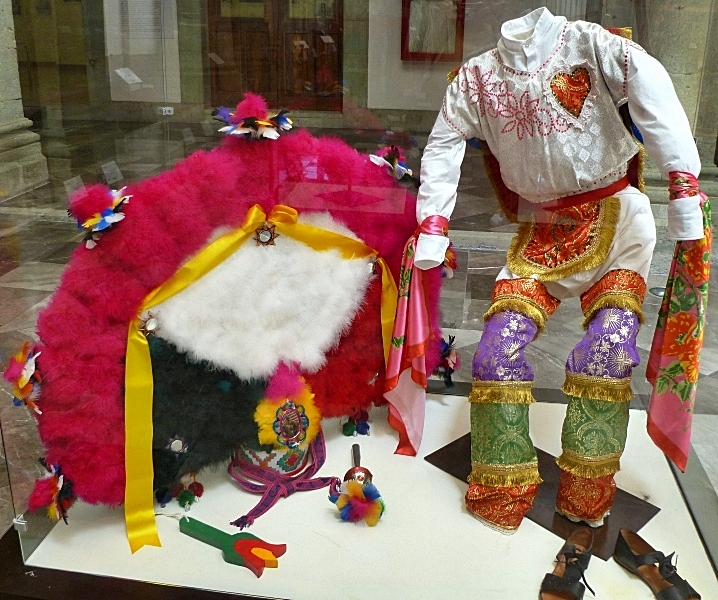 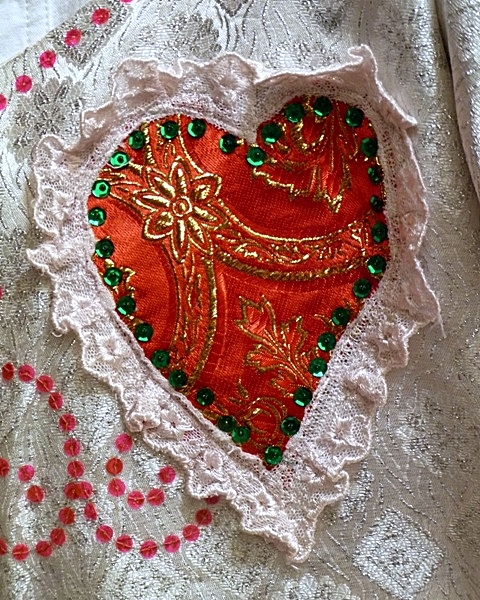 to be continued ........ to be continued ........ |
|
|
|
Post by tod2 on Sept 11, 2012 13:25:30 GMT
Bixa this is truly spectacular! The colours are beyond gorgeous, and the workmanship I take it, is all hand done? This is very intersting and I'm looking forward to more.
|
|
|
|
Post by htmb on Sept 11, 2012 14:15:50 GMT
I second that, tod! Such beautiful work. I continue to be struck by the colorful clothing in your posts. It's so nice to get close-up photos of some of this beautiful work. I look forward to seeing more, also.
As an aside, I shudder every time I think about how, as a child, I cut up a beautiful rug my mother had brought back from Peru. I wanted to be able to wear it like your white and violet 4th picture, so I cut a hole right in the middle. My poor mother was so upset with me.
|
|
|
|
Post by bixaorellana on Sept 11, 2012 16:12:14 GMT
Thanks for your enthusiasm, ladies! Tod, yes -- except where noted, all the work is by hand. I'll include some links for those who are interested in more in-depth information. Ah, Htmb, what a clever and imaginative child you were. As an adult, I can understand how your mother would have wanted to send you to your room forever. You can see that all of the huipiles are formed of three panels. That's a practical outcome of the width limit imposed by the waist loom. Expand the three pictures in this link to see the loom in action. This article looks at the history and evolution of weaving and clothing in Mexico and in Oaxaca. This website documents an ongoing project of more than a decade of seeking out and documenting the traditional dress of Mexico. It's a fascinating labor of love. Here is a link to my thread on Zaachila's guelaguetza, for those who may not have seen it. You can see the dresses on real people. |
|
|
|
Post by bixaorellana on Sept 11, 2012 16:39:51 GMT
Stunningly elaborate work. The dresses shown in this Reply all come from the Chinanteco region, but from different towns.
Go here to learn their backgrounds.        |
|
|
|
Post by bixaorellana on Sept 11, 2012 17:01:58 GMT
|
|
|
|
Post by lugg on Sept 11, 2012 20:30:42 GMT
Absolutely beautiful , the colours , the details and your fabulous photos.
I have not yet followed your links but will do. Looking forward to your next posts on this thread.
Some of the designs look so modern still and a few remind me of clothes in one of the present day UK high street stores - (Monsoon) although I am sure that the workmanship in Monsoon would not compare favourably
|
|
|
|
Post by bixaorellana on Sept 11, 2012 21:11:13 GMT
Thanks so much, Lugg. I find large commercial displays such as the one which follows encouraging, as this craftmanship shouldn't pass away. The Governor's Palace is a vast space, with plenty of room for all the different stands ~  There's more than one way to honor the past! There's more than one way to honor the past!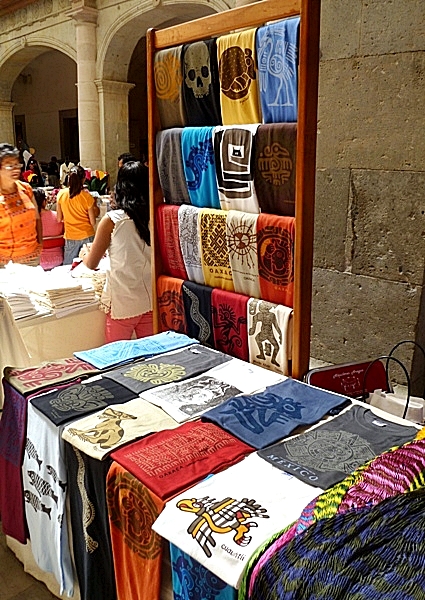 I think these are known in the US as "Mexican wedding dresses", although they're really just traditional garments from the nearby town of San Antonino Castillo Velasco. I think these are known in the US as "Mexican wedding dresses", although they're really just traditional garments from the nearby town of San Antonino Castillo Velasco.  Look at the delicacy of the weaving in these garments ~ Look at the delicacy of the weaving in these garments ~  If you all are wondering who wears these, they're used by women of all stripes, including gringas. The "wedding dresses" are usually worn as-is, but many of the huipiles are paired with a skirt, which gives a more finished look. Without the skirt, there can be too much of a dressing gown aspect to the garment. As a matter of fact, I own several of the plainer versions of this white one, which are my housecoats. |
|
|
|
Post by bixaorellana on Sept 11, 2012 21:39:48 GMT
|
|
|
|
Post by nycgirl on Sept 12, 2012 15:30:01 GMT
Amazing, amazing stuff, Bixa! The weaving, the embroidery, the hammered gold are all so exquisitely made. I love the variety, it really conveys the rich diversity of Oaxaca's culture.
The piece that I would most to wear, if I could ever dream of owning such a valuable garment, is the embroidered dress from the Isthmus of Tehuantepec. I love the bright colors against the black background.
The video is fun to watch. I appreciate the clothes even more when I see how they move.
|
|
|
|
Post by bixaorellana on Sept 13, 2012 3:29:30 GMT
Thank you very much, NYCGirl. It's perfect that you chose the dress of the Isthmus for yourself. In this state, which often seems a world of the straight-haired, people from the coast often have curly hair. The women from the Isthmus are very lively, with outgoing, friendly personalities that match their sparkling beauty. They wear even their everyday long skirts & boxy tops with flair. You'd fit right in! Don't know if you ever saw the mezcal fair thread, which features quite a few gala outfits from the Isthmus. I really like that video. The moment that is my particular favorite is the one featuring the girl wearing a skirt & blouse like the very first outfit in this thread. Just looking at it in the exhibit, it seems so staid, so covered up. But then you see the girl work that skirt with an exuberant hip swing, & the clothes take on a whole new personality. |
|
|
|
Post by bixaorellana on Sept 13, 2012 4:00:56 GMT
|
|
|
|
Post by bixaorellana on Sept 13, 2012 4:09:25 GMT
|
|
|
|
Post by bixaorellana on Sept 13, 2012 4:26:51 GMT
The exhibition was artfully hung, but skimpy on documentation, so we'll just have to admire it without details. As it happens, I recognized this piece as coming from Santo Tomás Jalieza. People wanting to know more about that work and Oaxacan textiles in general will be interested in this link.
|
|
|
|
Post by bixaorellana on Sept 13, 2012 4:35:58 GMT
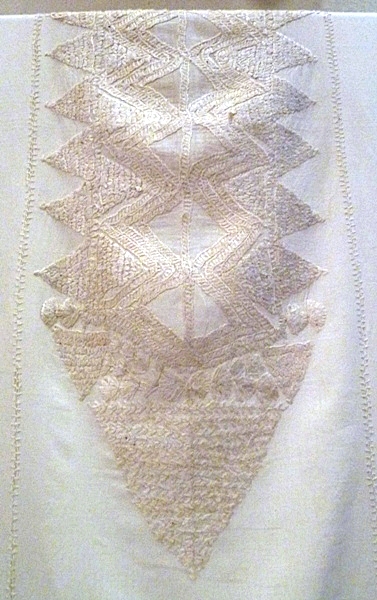    I had gotten so absorbed in the exhibition that I was somewhat surprised by this window. It's obviously a contemporary piece. I had gotten so absorbed in the exhibition that I was somewhat surprised by this window. It's obviously a contemporary piece.
I like it immensely, not least because fish are a favorite motif with me. It wasn't until I got the pictures off the camera that I realized there was a cross in it.
Oh, right -- this was a chapel!   It cerainly has the very big altar to prove it ~ It cerainly has the very big altar to prove it ~ The next time I pass that way, I must be sure to read what's in the floor plaque. In the meantime, you all can take notes on how to dress like a tourist. The next time I pass that way, I must be sure to read what's in the floor plaque. In the meantime, you all can take notes on how to dress like a tourist. And now out of this contemplative gloom into the bright light of day. I hope you all enjoyed our walk through the weaving of Oaxaca. And now out of this contemplative gloom into the bright light of day. I hope you all enjoyed our walk through the weaving of Oaxaca. |
|
|
|
Post by htmb on Sept 13, 2012 14:12:36 GMT
When I lived in Houston a hundred years ago, we could find "Mexican Wedding Dresses" on many of the busy street intersections. I remember owning several and just loved them for wearing as a regular dress, or as a beach coverup. Of course, the workmanship was not as fine as on the dresses in your pictures and I suspect the embroidery was done by machine. I still loved wearing them.
|
|
|
|
Post by bixaorellana on Sept 14, 2012 17:31:29 GMT
I think that must have been a "best of" selection there at the Gov.Palace, Htmb. I'd probably hurt myself if I got anywhere near a sewing machine, so I think machine embroidery should be given its due.
So many of these traditional garments show evidence of things from different eras having been incorporated into them over time. I can't imagine the pre-columbian versions of the Jalapa de Diaz huipil (Reply #5) would have incorporated machine-made (or any) lace or shiny embroidery thread, for instance. The outfits from Tlahuitoltepec (OP) and many from the Isthmus proudly and blatantly feature machine embroider as part of the traditional canon now.
Another note about authenticity -- I knew some women in a colonia here in Xoxo who were always embroidering. Noting one day that their work was on the "wedding dresses", I asked where it was from. They told me that they didn't know, that some man just brought them the dresses with the designs already drawn on them. The designs appeared to be done in ball point pen. Thinking about it, the sheer volume of those dresses available for purchase would indicate they aren't all being turned out in the same little village.
|
|
|
|
Post by bixaorellana on Sept 15, 2012 3:25:32 GMT
Here's a bit of serendipity, re: machine embroidery & tradition ~~ Today at the Friday market in the park, I passed a stand selling everyday contemporary clothing ornamented with Isthmus-style embroidery. They also had blouses, skirts, & dresses based on rebozos. The clerk handed me a business card & said brightly, "We're on facebook. All the styles are there." Sorry, I realize not everyone gets on "Face" (as it's called here). Here's the link, for the motivated: www.facebook.com/pages/Arellanos/426095880765135 |
|
|
|
Post by nycgirl on Sept 17, 2012 2:20:04 GMT
What a sweet thing to say!  More great photos! I love those brilliant-colored rugs. I think my favorite is the red-and-white one with the bird motif. That chapel window is beautiful, and so unexpected! I really like the contemporary clothing with the Isthmus-style embroidery. They're a nice marriage of traditional and modern. |
|
|
|
Post by lugg on Sept 21, 2012 17:45:51 GMT
Just catching up with this. Like Nycgirl I too am a fan of the green/black dress and I adore the tunic ( last photo in# 14)
I am not sure what the well dressed tourist is standing on but I sure as hell wanted to tell him to get off it
Finally the video is fab Bixa, and, as you say, it really brings the clothes to life.
|
|
|
|
Post by Deleted on Sept 21, 2012 18:23:43 GMT
Looking at the map of the state of Oaxaca, I am surprised that there are so many different styles in a relatively small area. (Before writing this, I made sure to check the size of Oaxaca compared to France just in case they were the same size! Oaxaca is 93,793km² while France is 675,417km².) I would say there are more different regional styles than in all of France. And of course, the more important point is that you have made it clear that the residents still dress this way, whereas in France you will only see the regional costumes at a folklore festival. Just like the rest of the world, we buy our everyday clothes from China now.
The craftsmanship is indeed remarkable, but it unfortunately gives me all sort of modern cynical thoughts about the near future such as "they're not watching TV all day yet' or "nobody is worried about 'machine washable'." It seems obvious that all of these wonderful things are doomed to disappear sooner or later -- the attire of some of the younger people in Oaxaca has not gone unnoticed.
The modern designs strike an acceptable medium between tradition and simplicity, but it would be truly tragic if ever the old methods were completely abandoned and the skills were lost forever.
It will be interesting to check back on all of this in 20 years.
|
|
|
|
Post by bixaorellana on Sept 23, 2012 17:12:39 GMT
Thanks to all of you for the nice feedback.  I really like the contemporary clothing with the Isthmus-style embroidery. They're a nice marriage of traditional and modern. I'm pretty sure I linked this thread already somewhere in this thread, but check out #16 here: anyportinastorm.proboards.com/index.cgi?board=mexico&action=display&thread=4334 for amazing take-offs on the traditional. I adore the tunic ( last photo in# 14) Fabulous workmanship in that, & isn't it amazing how it's now in style. Kerouac, you brought up some interesting points which can partly be explained by geography -- this is an extremely mountainous region -- and partly by history -- influxes of different peoples at different times. Even now, dialects within a particular language can differ a great deal. This history overview might interest you. Even a quick scan will reveal why there is so much variety. It seems that homogeneous modern world is now quickly making inroads here, but it took a very long time. Check out #7 here and compare it to how Europe or the US looked in the same time period. And somewhat later in time, in the '40s or '50s -- this is just off the main plaza in Oaxaca:  more on the pic here more on the pic hereBut your "cynical thoughts" about the disappearance of regional dress and regional skills are well placed. There are pockets where the skills are proudly handed down from generation to generation, but with time and economic pressure, that will slowly disappear. |
|
|
|
Post by bixaorellana on Mar 4, 2013 5:51:04 GMT
Just adding to this thread because of some recently seen extravagant beauty.
I caught sight of this lady mid-February in the churchyard at Xochimilco, site of a weekend organic market.
I love the way she's teamed a new-style ribbon shawl with her traditional clothing from the Isthmus of Tehuantepec.  The following week a friend & I happened upon this lush display of floral embroidery in the same park. The following week a friend & I happened upon this lush display of floral embroidery in the same park.
This was obviously a wealthy group of people, as shown by their exquisite examples of ropa istmeña. That's not the common gold-washed jewelry from the market, either!     |
|
|
|
Post by bixaorellana on Mar 4, 2013 5:58:58 GMT
|
|
|
|
Post by bjd on Mar 4, 2013 8:28:45 GMT
What was the occasion? A wedding?
|
|
|
|
Post by mossie on Mar 4, 2013 8:46:41 GMT
Where has this thread been hiding  The craftsmanship and colours blew me away. |
|
|
|
Post by tod2 on Mar 4, 2013 12:48:45 GMT
Very nice to look through the photos from the beginning once more. My those dresses are vibrant - I would guess the wearer will only ever wear it again in about a years time when all her neighbors and friends have forgotten it. Then she can say "Oh this old thing - I've had it for ages!"
Been a really lovely look into the culture of a part of Mexico.
|
|
|
|
Post by htmb on Mar 4, 2013 16:31:23 GMT
I just love this thread. I'm glad it popped up again. So many beautiful pieces to admire.
|
|
|
|
Post by bixaorellana on Mar 7, 2013 5:17:01 GMT
Bjd, we never figured out what was being celebrated. It wasn't a wedding or a baptism, so maybe the blessing of some kind of club? Thanks, Mossie. The thread was started @6 months ago. I admit the title may not be something that immediately draws one in. You might want to check out this thread: anyportinastorm.proboards.com/index.cgi?action=display&board=pictures&thread=5505&page=1#124805Thank you, Tod. I think women in the Isthmus must have a whole wardrobe of the fancy dresses. I haven't been there in years, but they have festivals every time you turn around. What a nice thing to say, Htmb ~~ thanks. My favorite is the last one, with the not-really-red background & all that golden yellow exuberance. |
|




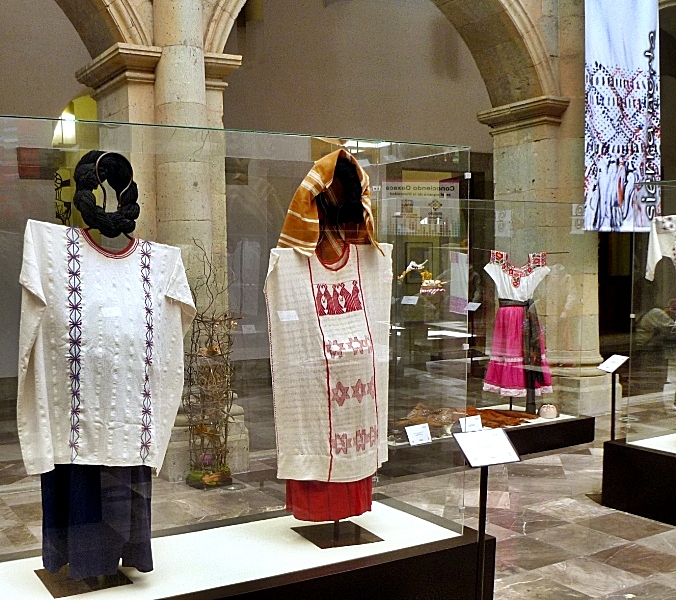




































































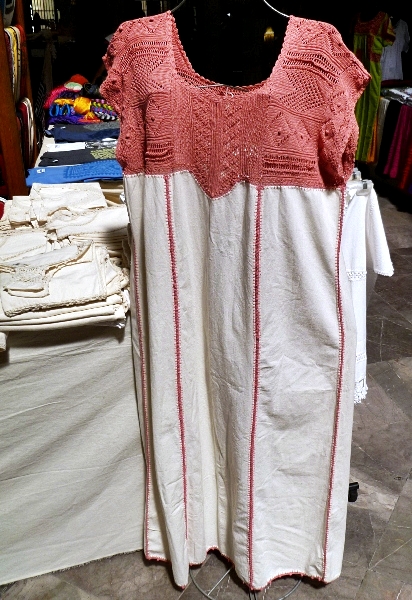

















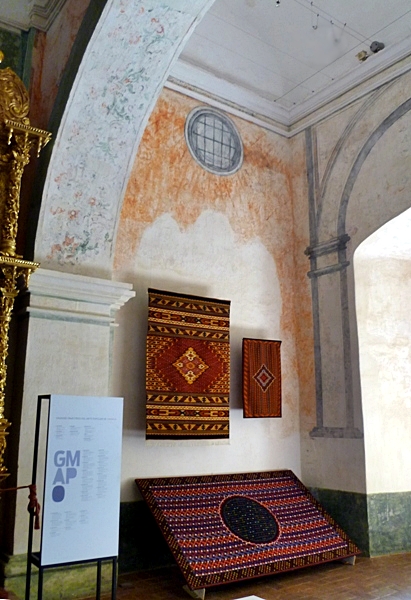









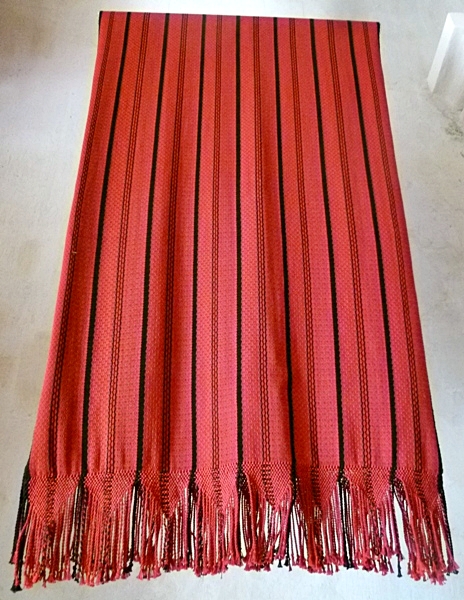



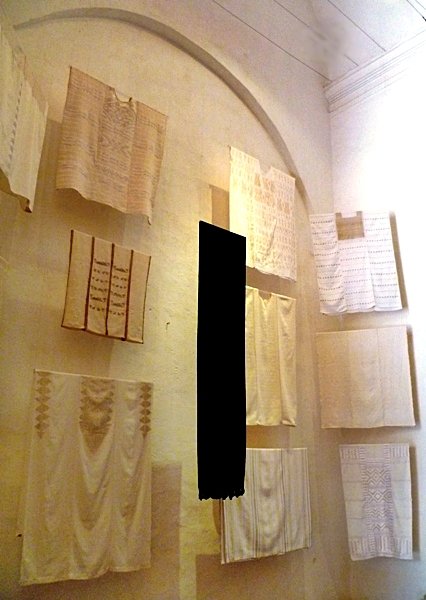












 more on the pic
more on the pic 














